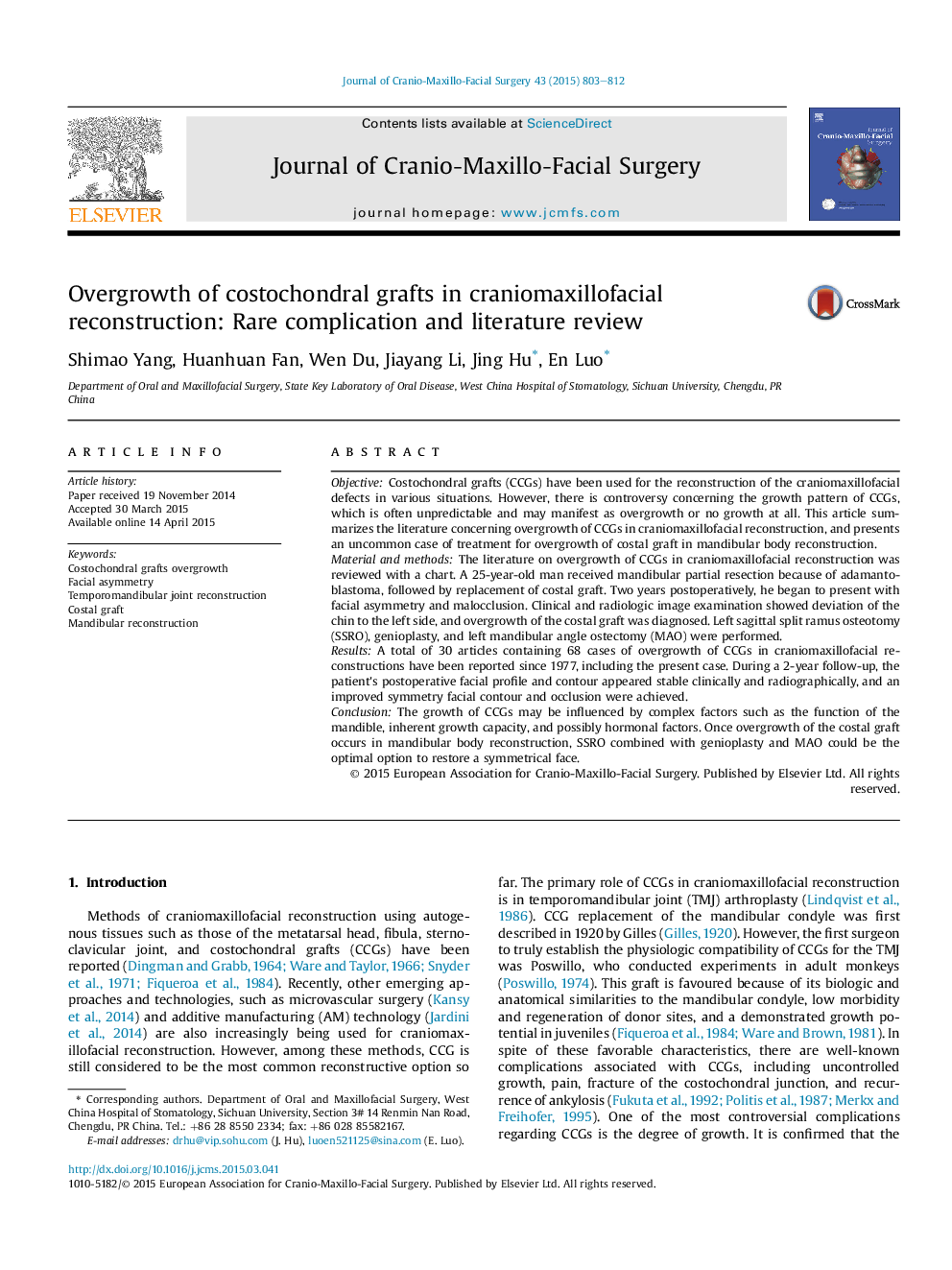| Article ID | Journal | Published Year | Pages | File Type |
|---|---|---|---|---|
| 3142299 | Journal of Cranio-Maxillofacial Surgery | 2015 | 10 Pages |
ObjectiveCostochondral grafts (CCGs) have been used for the reconstruction of the craniomaxillofacial defects in various situations. However, there is controversy concerning the growth pattern of CCGs, which is often unpredictable and may manifest as overgrowth or no growth at all. This article summarizes the literature concerning overgrowth of CCGs in craniomaxillofacial reconstruction, and presents an uncommon case of treatment for overgrowth of costal graft in mandibular body reconstruction.Material and methodsThe literature on overgrowth of CCGs in craniomaxillofacial reconstruction was reviewed with a chart. A 25-year-old man received mandibular partial resection because of adamantoblastoma, followed by replacement of costal graft. Two years postoperatively, he began to present with facial asymmetry and malocclusion. Clinical and radiologic image examination showed deviation of the chin to the left side, and overgrowth of the costal graft was diagnosed. Left sagittal split ramus osteotomy (SSRO), genioplasty, and left mandibular angle ostectomy (MAO) were performed.ResultsA total of 30 articles containing 68 cases of overgrowth of CCGs in craniomaxillofacial reconstructions have been reported since 1977, including the present case. During a 2-year follow-up, the patient's postoperative facial profile and contour appeared stable clinically and radiographically, and an improved symmetry facial contour and occlusion were achieved.ConclusionThe growth of CCGs may be influenced by complex factors such as the function of the mandible, inherent growth capacity, and possibly hormonal factors. Once overgrowth of the costal graft occurs in mandibular body reconstruction, SSRO combined with genioplasty and MAO could be the optimal option to restore a symmetrical face.
